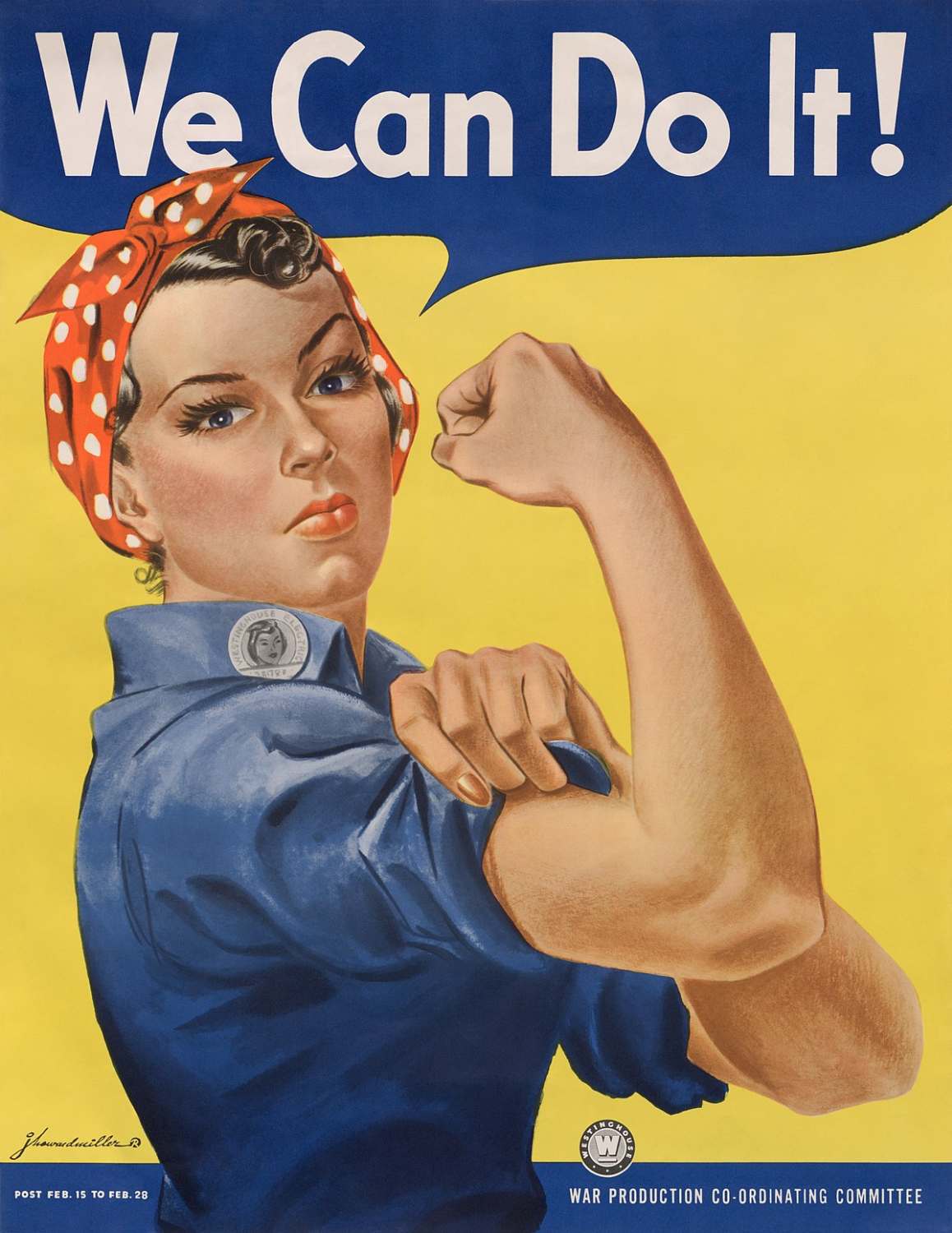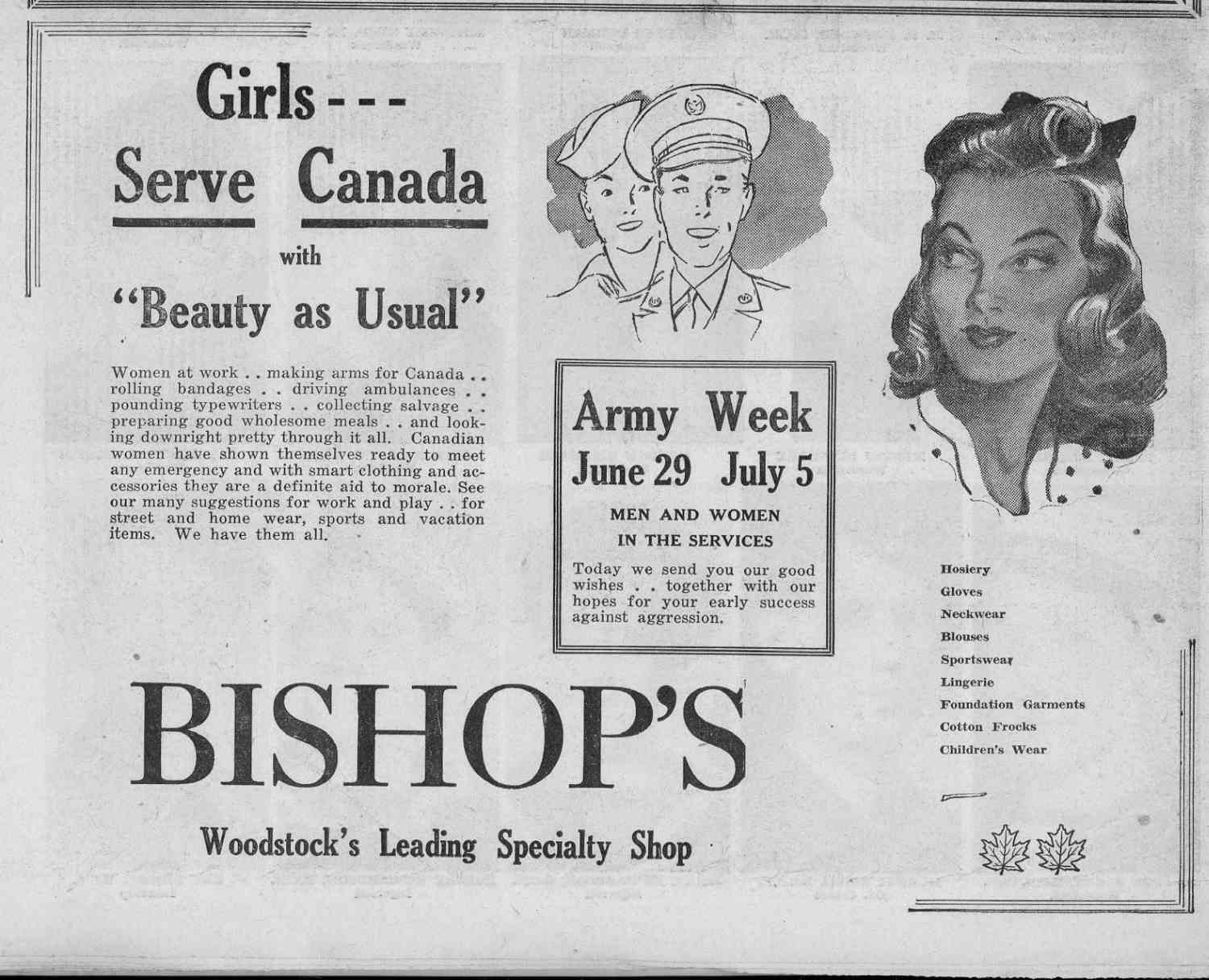Women At War
Women At War
How did women contribute to the war effort and achieving victory during the Second World War? Read on to find out.
By Megan Lockhart, Archives Technician
Women’s contributions during the Second World War are often underrepresented in their portrayals by mainstream popular culture. There is a common misconception that women’s roles during the Second World War were limited to nursing. While I was conducting research and working through a number of archival records from the Second World War for a new online educational resource for high school students, I was fascinated by the records I found outlining the variety of essential roles women took on during the war years.
There were numerous ways women contributed their time, finances, and skills to the war effort. Firstly, women kept things running smoothly on the Homefront. Manufacturing and the economy depended on women during the war. As men enlisted and were drafted, their jobs were left unoccupied. Who was left to replace them? The women who were left behind at home. These jobs required someone to fill them to keep production and the economy moving forward. Manufacturing changed during the war, many factories altered what they were producing to contribute to the war effort, making grenades and parts for military vehicles, not unlike how manufacturing companies have switched to producing masks and ventilators during the current Covid-19 pandemic. Women were responsible for filling these roles and helping to produce munitions, build ships, airplanes, and military vehicles. World governments began running campaigns recruiting women to work in factories which led to the creation of one of the iconic symbols of the Second World War: “Rosie the Riveter” and her accompanying slogan “We Can Do It”. Rosie’s image as a woman wearing a jumpsuit, her sleeves rolled up and hair tied back became symbolic of the women who patriotically took on the duty of factory work and labour that previously had been exclusively “men’s work” for the most part.
Another way women helped keep the economy afloat during the Second World War was through purchasing goods. With a large portion of the population away at war and unable to shop as they normally would, women on the Homefront were relied upon to “shop as usual” so local businesses and franchises could continue to make money. Ad campaigns encouraged women to buy clothes, shoes, handbags, gifts, and makeup as part of their “patriotic duty” and to “look pretty” to support the soldiers fighting on the front lines by keeping morale high. Adolf Hitler notoriously had a disliking for red lipstick so ads promoting women buying and wearing red lipstick to show their support for anti-fascism were commonly seen in newspapers.

A "Beauty as Usual" ad featured in the Woodstock Sentinel-Review newspaper, WWII
Of course, women also had important roles in healthcare and nursing. Many women volunteered to train to become nurses with the Royal Canadian Army Medical Corps and traveled across sea to nurse wounded and sick soldiers back to health on the front lines. These Nursing Sisters put their lives at risk and often had to live and work in atrocious and frightening conditions. They faced the danger of being captured, becoming wounded or even death. According to Veterans Affairs Canada, seventeen Canadian Nursing Sisters died while serving during WWII (and sixty-one nurses lost their lives during the First World War).
The Second World War was the first-time women were allowed to serve in the military in uniform in Canada. Women in the Royal Canadian Air Force often took on administrative roles, but some helped with packing and repairing parachutes, meteorological observations and reports, communications, and assisted with electrical and mechanical work on aircraft. Some women even performed intelligence operations such as analyzing photographs. The Canadian Women’s Army Corps had women take on many essential duties such as preparing food, medical aid, and repairing clothing; they also occupied the role of driving and maintaining military vehicles. In the Auxiliary Territorial Service, women were first given duties as cooks, clerks, and storekeepers. As the war years went on, their duties expanded and they drove military vehicles, delivered mail, operated radar, inspected ammunition, and some even joined anti-aircraft gun crews. Women also served in similar roles in the naval service.

Women performing administrative duties in the main office of the
Woodstock Advanced Driving & Maintenance School, 1940s
After conducting research into the numerous roles women took on during the Second World War, it became clear to me that the aid of women was essential during the war, and the federal government’s war efforts heavily relied upon their support. These women willingly gave up the comforts of their lives before to offer their support during the war years, often for extraordinarily little recognition from the federal government and society as a whole. So, when reflecting upon the First and Second World Wars, let’s leave some space in our collective memories to honour the sacrifices these women made in order for victory to be achieved.